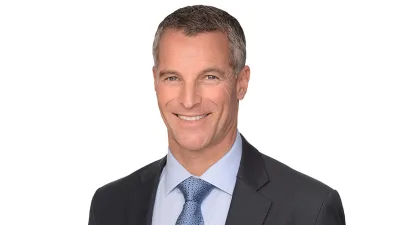Badging means survival for providers
The logic behind badging is often discussed and any planning group contemplating the roll out of a master trust or wrap product to its advisers will undoubtedly debate the merits between building their own and badging the work of someone else’s.
The argument has two aspects, is easily drawn but many would argue it is mainly one sided.
Option number one is to spend a whole lot of money building a platform system from the ground up, including all the technical hurdles and additions of staff to make it run as well as keeping it up-to-date.
Option number two says use and badge someone else’s product who has gone through all the above and make use of their expertise in keeping the platform up to date and working. This last point tends to be in the best interest of the provider and the user, with the provider having to stay ahead of the pack to keep business and the user benefiting from new developments.
Given that financial planners and their dealers are coming to a greater recognition that their role is not in creating technology to assist in giving advice but rather giving advice backed up by technology, the shift to badging seems logical. And it has been a significant shift.
In fact the underlying badged products account for less than 20 unique products in the market, but in their badged guises they make up around 70 products in the market.
This fact has been recognised in the league tables later in this edition that for the first time have included the badged products under the banner of the group providing the underlying product.
In doing so it also becomes obvious that badged products do not differ that widely from each other, but tend to echo the investment options, fees and other aspects of the ‘original’ product.
This should not be too surprising considering the motive for badging the product was to have a product on the table for adviser use at a much lower cost than building one from scratch.
However, the league table does show that some groups have added or even taken away from areas such as investment options in an effort to add further to the product offering, usually based on demand from the group’s advisers.
Yet what is the most interesting aspect of badging is the prominence it has, the amount of advisers it covers and the dollars it harvests.
As mentioned earlier, badged products make up about 70 master trust and wrap products on offer and this search for scale is an important issue.
Often the industry is told about the prophetic claim by Cerrulli that the platform market in Australia would be crunched down to around five players in five years (or 2004/5 from the time the comment was made).
Late last year Cerulli reiterated that statement with the caveat that it would be five big players that would come to dominate the market. And it is here that Cerulli has a point.
The point will be that the big players will be those with the funds and the wherewithal to ensure they keep on gaining those funds, and the best way to ensure that happens is to have as many clients, dealers and advisers supporting the product directly or through their own badged offering.
This is not happening in the future, this is happening now. The table relating to non-super platforms shows thatBThas nearly $3.6 billion,Macquariethrough its badged vehicles has $4.7 billion,Asgardhas around $4 billion andIOOF, a new comer to this game, has $280 million.
The numbers look just as good on the superannuation side with BT holding $2.39 billion through wrap, Macquarie $1.4 billion and Asgard eclipsing them both with $5.2 billion, while IOOF has a respectable $849 million.
These figures have a measure of elasticity about them, not because the platforms report the wrong numbers, but because not all the figures get reported.
This occurs because many of the groups that chose to make use of a badged product either are not keen to reveal that fact in public or will not reveal the dollars they have placed through the badged product.
This reluctance to reveal the flow of money is also perpetuated by the product provider who, on the request of clients, will withhold the information. BT for instance has a number of badging arrangements that it cannot reveal to the market because the deals have been based on confidentiality.
Nonetheless the size of the dollars is a reflection of the advisers who have access to and make use of the badged platforms.
The table left shows that badging is indeed a beneficial way for platform providers to get product out into the market and it has been taken up by many groups choosing to take option two outlined above.
What is also interesting is that there is not always a correlation between advisers with access to a platform, the number of badged versions in the market and the dollars the platform holds.
One of the reasons for that is that while advisers may have access to a master trust or wrap account as outlined in the table they may not actually make use of it preferring to access investments in other ways or even through other platform offerings available to the dealer group.
Another reason is that Asgard and Macquarie have their own advisers through groups such asSecuritorandPACTfor Asgard and private banking channels at Macquarie. BT on the other hand has only recently offered its wrap service to Westpac planners, with their impact not reflected in these figures, which are up to the end of 2002.
Despite that absence it is plain that badging works on many fronts for the dealer, the platform provider and it is hoped the adviser who has taken badged products into the heart of their businesses.
What remains to be seen is whether badging will continue to be the key to success and the move to scale in the market. One of the main hurdles in providing a robust platform is the cost of keeping it up-to-date and any glitches are considered by advisers as a mark in the negative column.
The challenge is now on for smaller platforms to be able to offer the same benefits the larger players have, at the same speed and the same cost if they wish to remain a player in the long term.
While boutique planning and funds management may still be a viable business in a number of years it is highly unlikely that boutique platforms will be commanding the headlines unless there is a massive shift in the industry due to changes not yet seen.
But if this does not happen and the big get bigger at the expense of the small the industry can never really claim it came as a surprise and Cerulli will probably not let us forget they called it first.
Recommended for you
As the financial advice industry looks to embrace career changers, Money Management speaks to a former teacher and international development worker who took the leap into advice.
A Federal Court ruling on whether licensees need to ‘take all reasonable steps’ regarding conflicted remuneration could extend to other parts of the advice process, according to law firm Hall & Wilcox.
Young investors aged under 40 are more than twice as likely to measure the value of their financial adviser based on progress towards their goals, Dimensional research uncovers.
A new financial advice business, licensed by Centrepoint Alliance, has recently commenced operations servicing HNW clients including retiring Baby Boomers and single women.















